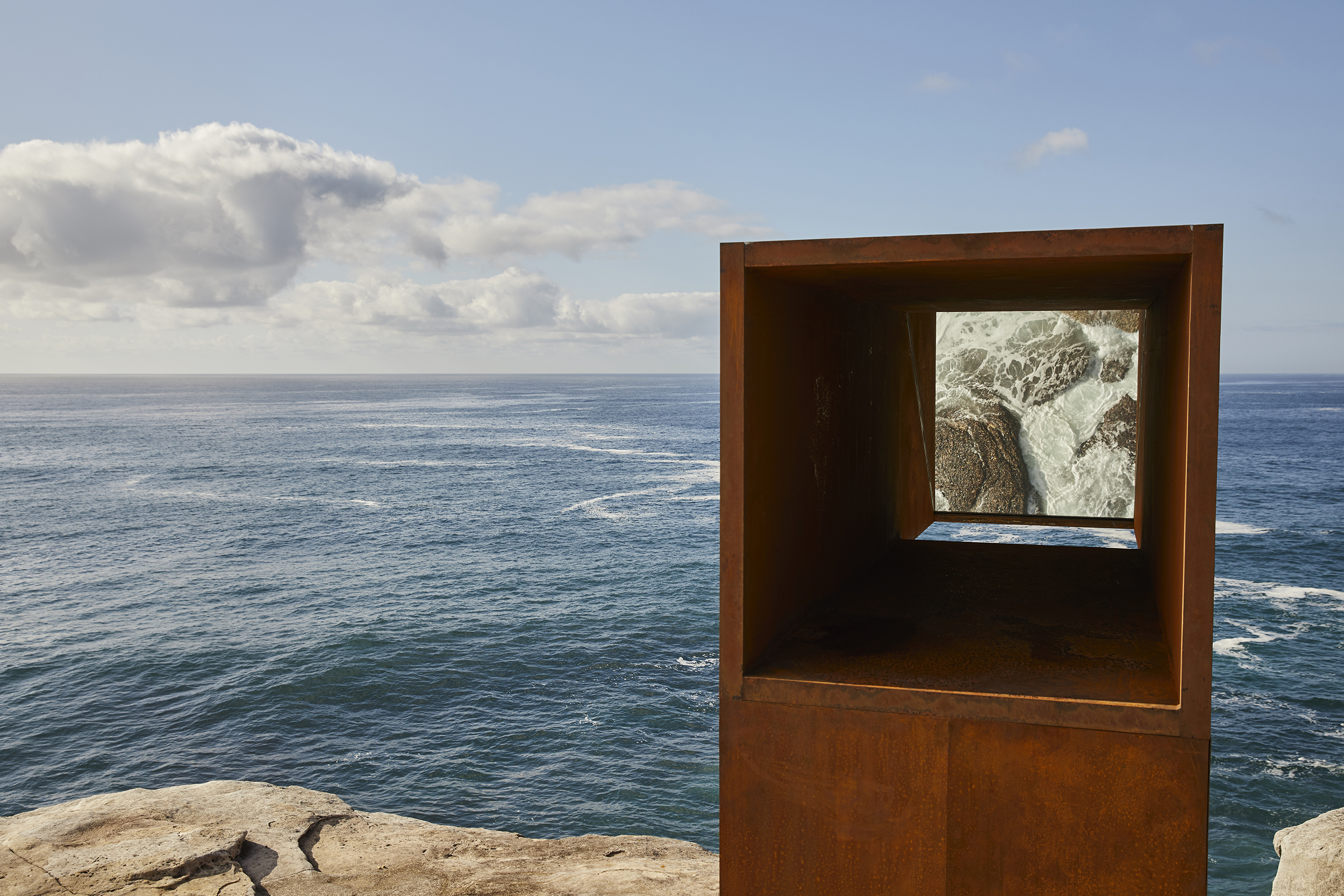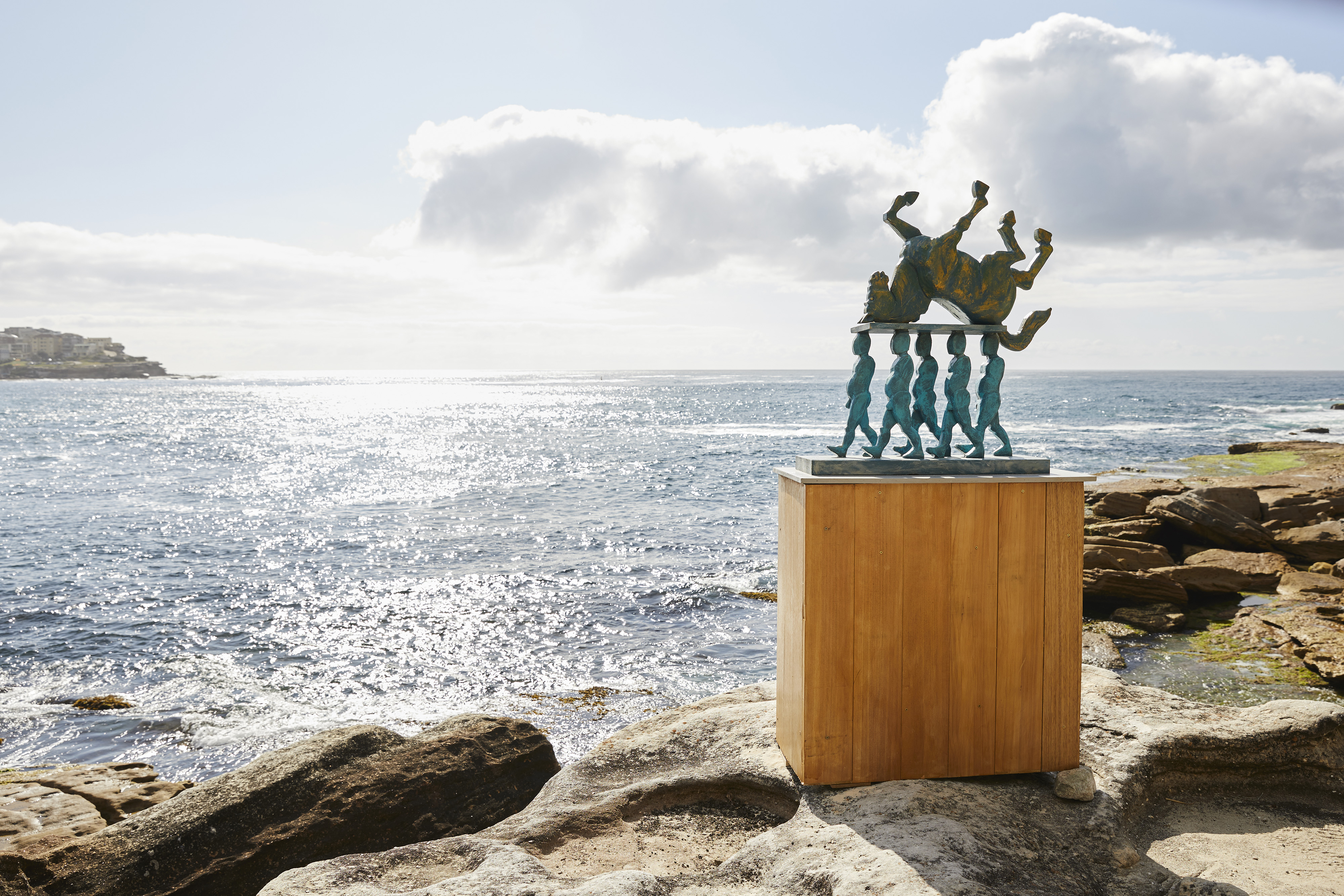
The biggest outdoor public art exhibition in the world is back featuring more than 100 sculptures by Australian and international artists.
A large periscopic monument reflecting the crashing waves of Tamarama Beach, a glass installation playing with the concept of time and perception and a sculpture inspired by an ancient symbol of a serpent eating its own tail are some of the works of art crafted by five UNSW alumni for this year’s Sculpture by the Sea exhibit.
The world’s largest free sculpture exhibition is now open to the public along a two-kilometre stretch of coastline from Bondi to Tamarama featuring more than 100 sculptures by Australian and overseas artists.
This year, the sculptural walk includes four alumni from UNSW Art and Design and one UNSW Built Environment graduate. The exhibition, which runs until 10 November, attracts more than 500,000 visitors each year. Find out more about the artists and their work below.
UNSW Art and Design
Nadia Odlum – Master of Fine Arts (2016)

As an emerging artist focused on exploring connections between vision and movement in perception Nadia Odlum is exhibiting at Sculpture by the Sea for the first time this year. She’s thrilled to be a 2019 Helen Lempriere Scholarship recipient, giving her the opportunity to be a Visiting Artist at the American Academy in Rome earlier this year.
Her work, called “This Present Moment, This Moving World”, is a two-way mirrored glass, concrete, powder-coated steel installation and will be on display at Marks Park in Tamarama.
“I’m interested in the processes of perception visually through movement and time,” Odlum said. “This installation plays with perception through the way natural light interacts with materials and reflects off the panels and angled mirrors throughout the course of the day.”
Odlum’s practice spans across various mediums including drawing, painting, sculpture and installation. In 2016 she was a recipient of the Australian Postgraduate Award from UNSW and has undertaken residencies in Paris, New York and Sydney, currently at the Parramatta Artists’ Studios.
Richard Byrnes - Master of Fine Arts (2002)

As a practising artist with more than 100 group exhibitions both in Australia and overseas, Richard Byrnes is still excited to be involved in this year’s Sculpture by the Sea exhibition for the sixth time.
“It’s great to be part of a high-quality, high-profile exhibition that is so accessible to Sydney,” Byrnes said. “Being involved with it has allowed me to find my own voice as an artist and exposed me to new ideas.”
The work, titled “Empires Dismantled” is made entirely from carved wood and then painted. It deals with the devolution of the core fundamentals of Western society, exploring themes such as loss of knowledge and clarity.
Paul Selwood - Master of Fine Arts (1993)

This award-winning sculptor is a Sculpture by the Sea veteran having previously participated in the exhibition 14 times, winning the Balneaves Prize in 2001. His steel sculpture titled Paradeigma Metaphysic is permanently displayed at The Royal Botanic Gardens.
For this exhibition, his piece titled “The Water Carrier” is inspired by themes of the ocean and sea waves. Selwood further develops the possibilities of the cut and fold process, which he has previously applied to the creation of large steel sculptures. He generally works with small scale models to discover the variations possible for a desired outcome.
“I’m interested in sculpture first as a tradition going back to prehistoric times. Sculpture speaks to us in a universal 'language of form' across the ages,” he said.
He added that the generous support provided to UNSW alumni for their work in the Sculpture by the Sea exhibition recognises that culture is dependent on institutional support.
Charlie Trivers – Master of Fine Arts (2011)

The sculptors 12th Sculpture by the Sea submission is called “Ouroboros” after an ancient symbol of a serpent eating its own tail. A more contemporary interpretation of the artwork would imply an endless recycling symbol in the modern world.
The work is made using plantation, timber and wood and according to Trivers is therefore close to carbon neutral in its making.
“Exhibiting at Sculpture by the Sea has played a huge role in my career, as well as giving me a clearer focus on my artistic direction,” Trivers said. “In the future I’m looking forward to experimenting more with fresh, new ideas.”
UNSW Built Environment
Joel Adler – Industrial Design (2017)

A large periscopic monument titled “Viewfinder” built from weathered-steel and a large bilateral mirror marks Joel Adler’s first Sculpture by the Sea entry. The sculpture is positioned on a rock shelf adjacent to Marks Park in Tamarama, cantilevering over the crashing waves below.
From the correct distance and height, exhibition attendees will see a view of the waves below that were previously unseen from the coastal path. Adler said the sculpture highlights the power of reflection, especially in creating new perspectives.
“Since attending the exhibition for the first time in 2006, being an artist at Sculpture by the Sea has been a dream of mine,” Adler said. “Only in recent years have I been able to manifest my skills and ideas in such a way that culminated in my entry and successful execution of the work.”
The Sculpture by the Sea 23rd annual exhibition is open from 24 October to 10 November 2019 and is accessible via the Bondi to Tamarama coastal walk.
